Key takeaways:
- Audio-visual heritage captures stories and emotions, preserving human experiences for future generations.
- Quality audio enhances storytelling by revealing subtleties of human feelings and creating immersive experiences.
- Effective use of audio techniques, such as layering sounds and strategic silence, can significantly elevate engagement in multimedia projects.
- Clear audio levels and thoughtful sound choices are crucial for emotional impact and audience connection.

Understanding Audio-Visual Heritage
Audio-visual heritage encompasses the stories, cultures, and histories captured in sound and moving images, acting as a bridge to our past. I often find myself reflecting on how a simple old recording can evoke deep emotions and transport us to another time. Have you ever listened to a song that instantly reminded you of a specific moment in your life?
As I explore various audio-visual materials, I realize how they preserve not only facts but also the very essence of human experience. For instance, I stumbled upon a documentary about a local festival that I used to attend as a child, and it brought back a flood of memories — the laughter, the colors, and the scents. Isn’t it fascinating how these recordings can ignite such vivid recollections?
I’ve come to appreciate that audio-visual heritage is not just a collection of artifacts; it’s a dynamic tapestry of personal stories and communal identities. Each piece invites us to engage and reflects a diverse spectrum of perspectives. When I think about the profound impact that audio can have, it makes me wonder: how can we better preserve these treasures for future generations?
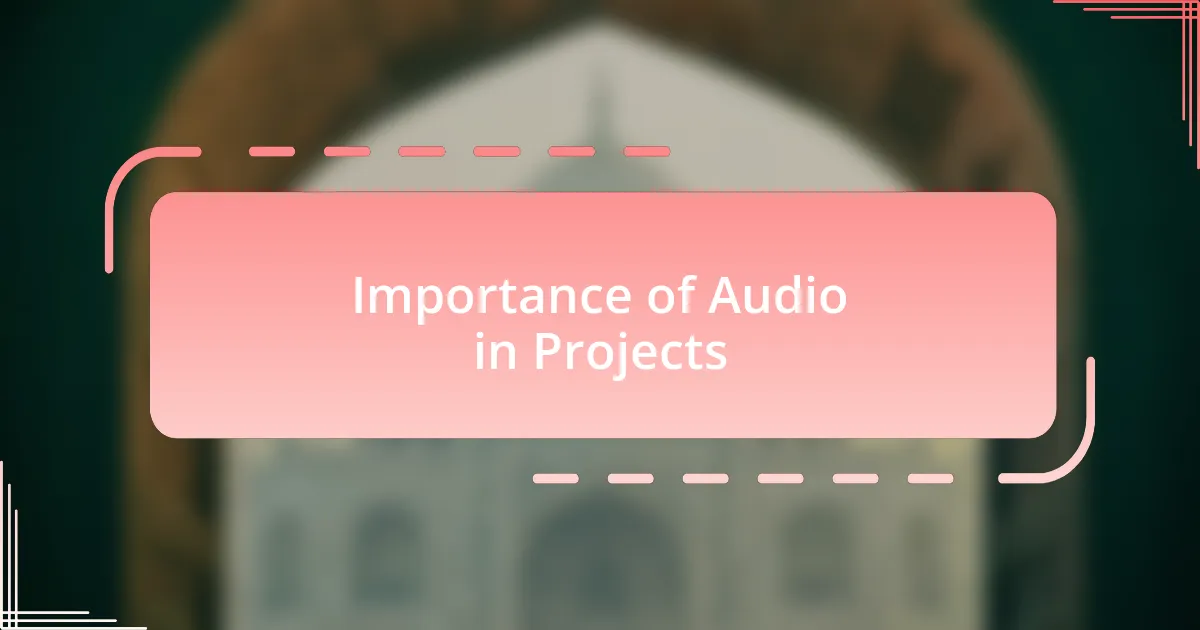
Importance of Audio in Projects
Audio serves as a crucial element in my projects, offering layers of meaning that visuals alone often can’t convey. I recall a time when I worked on an oral history project. The moment I first listened to those heartfelt stories, I realized how the tone of voice could express emotion far beyond words. It was an eye-opening experience, showing me that audio can reveal the subtleties of human feelings.
In another project, I experimented with soundscapes to set the mood for historical images. I remember pairing ambient sounds with photographs from an old fishing village, and the combination brought those images to life in a way that felt immersive. Have you ever noticed how a gentle breeze or the distant sound of waves can transport you to a place? That’s the power of audio—it envelops the audience in the experience, making it more relatable and evocative.
Moreover, I find that incorporating quality audio can significantly enhance storytelling by capturing attention in a world filled with distractions. In a recent presentation, I used a poignant audio clip from a surviving member of a cultural community, and the audience was captivated. It made me ponder: how could we leverage the emotional weight of audio to foster deeper connections with our heritage?
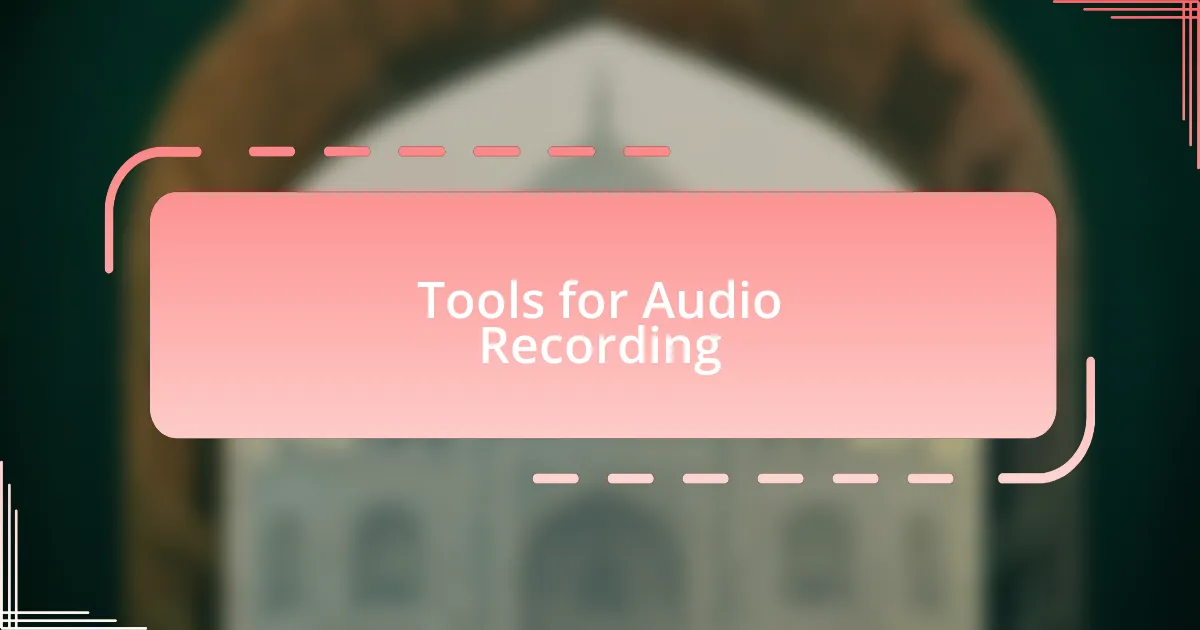
Tools for Audio Recording
When it comes to audio recording tools, I’ve found that the right equipment can make all the difference in capturing the essence of a moment. My go-to is a handheld recorder, which I once took to interview a local musician. The crisp sound it captured, especially the unique inflections in their performance, allowed me to translate their passion in a way that simply wouldn’t have come through with a standard phone recording. Have you ever thought about how the smallest details in sound can change your perception of a story?
For more controlled environments, I use USB microphones. I remember a time working on a podcast series where clarity was paramount. Using a condenser microphone made a significant impact, allowing the subtleties of my voice to resonate well. It’s amazing to see how investing in the right technology can elevate the quality of our audio. Don’t you agree that clearer audio makes for a more engaging listening experience?
I also utilize audio editing software, which is essential for refining recordings. During a project focused on archiving oral histories, I spent hours cleaning up background noise and enhancing vocal clarity. The intricacies of those stories deserved to be heard without distractions. That experience made me realize how crucial post-production is—without it, even the best recordings can fall flat. What tools do you think are vital for bringing stories to life through sound?

Techniques for Effective Audio Use
When I integrate audio into my projects, I prioritize the storytelling aspect right from the start. For instance, during a short film project about cultural heritage, I used ambient sounds to set the scene. The subtle rustling of leaves or distant chatter didn’t just provide background noise; they painted a vivid picture for the audience. Have you ever noticed how sound can transport you to a different place, enhancing the emotional impact of visuals?
I find that layering audio tracks can also dramatically elevate the experience. In a documentary I worked on, I blended interviews with music that mirrored the subjects’ emotions. It was like creating a soundscape that echoed their journeys—whenever I listen back, it sends shivers down my spine. How often do you remember audio that lingers in your mind long after viewing?
Additionally, I pay close attention to the pacing of audio elements. In a recent multimedia project, I adjusted the timing of voiceovers to align perfectly with the visuals. By carefully synchronizing sounds with on-screen actions, I noticed a significant increase in audience engagement. Have you ever experienced a moment when the audio and visual elements aligned so well that it seemed effortless? That’s the magic I’m always striving for in my work.
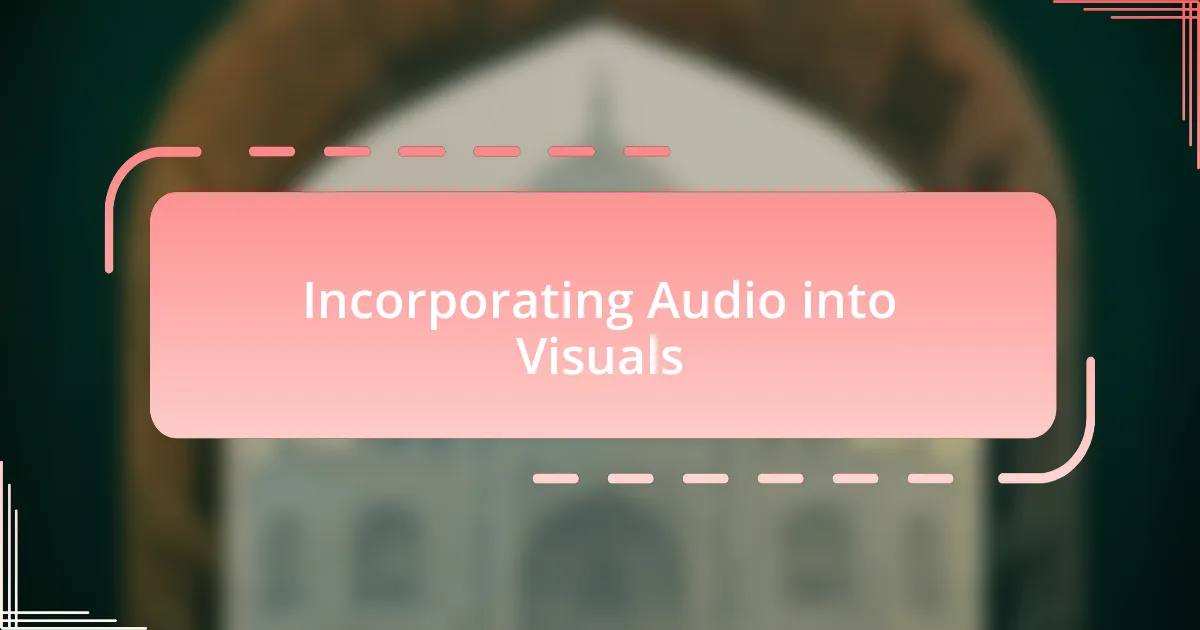
Incorporating Audio into Visuals
In my experience, using audio cues to highlight visual moments can create a profound impact. I remember a time when I paired a soft piano melody with a poignant scene of an elderly woman reminiscing about her youth. The music didn’t just complement the visuals; it elevated the emotional weight of her story, drawing viewers deeper into her memories. Have you ever felt how a simple sound could make a moment so much more powerful?
Another technique I love is the use of diegetic sound versus non-diegetic sound. In a short documentary focusing on a community’s traditions, I opted for sounds like laughter and clapping during visual celebrations. It made the audience feel like they were part of the festivities. Do you recall a time when sounds made you feel included in a scene? Those moments can turn passive viewership into immersive experiences.
I also find that the strategic use of silence can be just as effective as sound. During a project on silence in urban life, I intentionally left a few visual scenes without any audio. It was striking how the absence of sound created tension and allowed the visuals to resonate more profoundly. Have you ever experienced a scene where silence spoke louder than words? It’s a reminder that sometimes, less truly is more in storytelling.
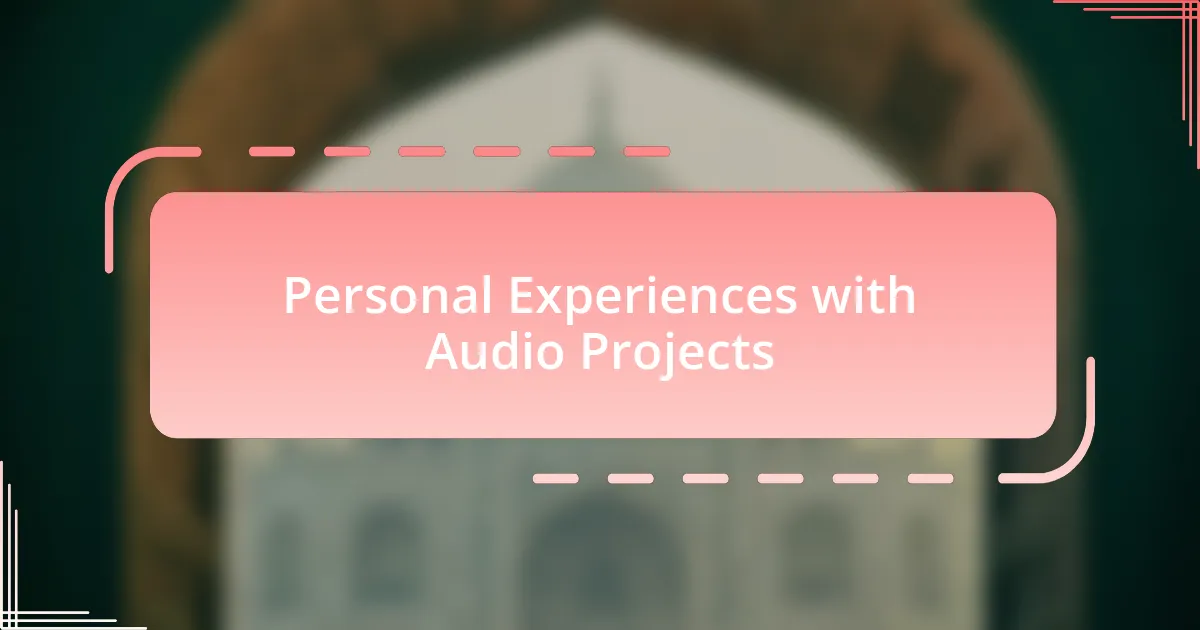
Personal Experiences with Audio Projects
In one audio project, I used field recordings from a bustling market to encapsulate the essence of daily life. As I blended these sounds with visuals of vendors and shoppers, I could almost feel the vibrant energy in the air. Have you ever watched something where you felt the atmosphere just by listening?
Working on an audio narrative about personal memories, I chose to layer voices of family members sharing their stories over intimate visuals from family gatherings. Hearing their laughter and emotions intertwined with the images created a warm nostalgia. I often wonder if those sounds evoke similar feelings in others.
One project that stands out involved a sound installation in an art exhibit dedicated to environmental awareness. I incorporated natural sounds like rustling leaves and flowing water while displaying visuals of nature. The combination offered a meditative experience, prompting viewers to connect with their surroundings. Has a sound ever made you pause and reflect on your relationship with nature? Through audio, I realized we can invite others into a moment of contemplation and connection.
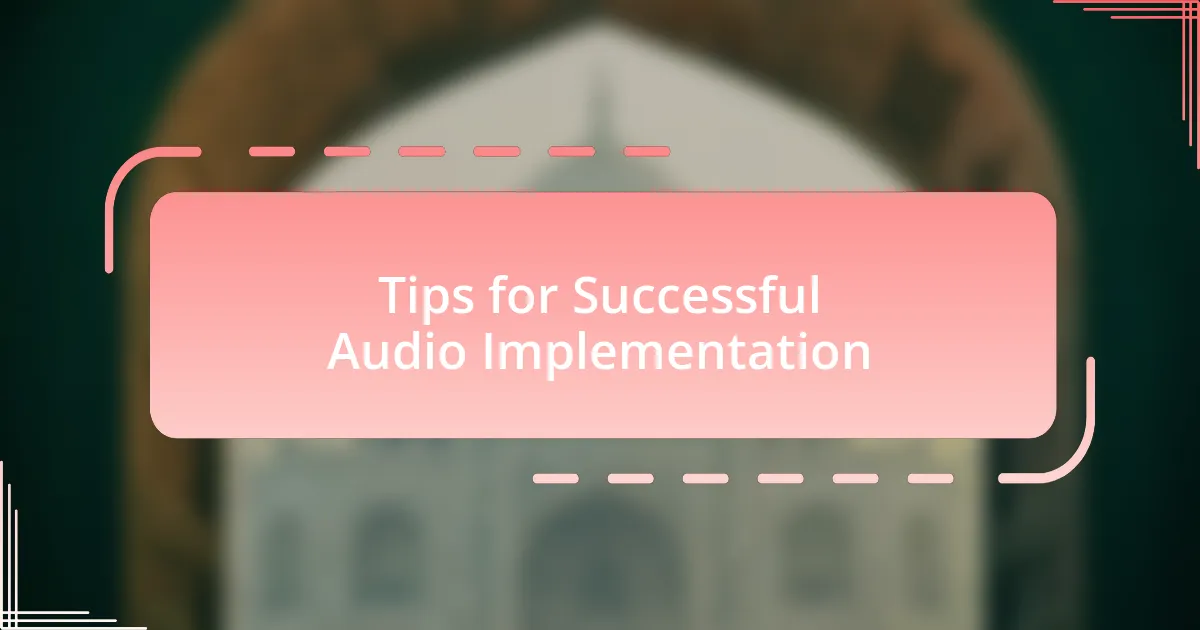
Tips for Successful Audio Implementation
When implementing audio into my projects, I’ve learned that clarity is key. The right audio levels can either enhance or overwhelm the visuals. I recall a project where I neglected to properly balance the sound of a gentle stream with the visuals of a serene forest; the audio became overpowering. It made me realize how essential it is to ensure that each sound supports the imagery rather than competes with it.
Additionally, considering the emotional impact of sound can transform a project. In one case, I experimented with different types of background music when creating a video about migration. The subtle shift from a hopeful melody to a more somber tune profoundly changed the viewers’ emotional response. Have you noticed how a simple change in music can shift the mood in a scene? It underscored for me the importance of thoughtfully selecting audio to evoke specific feelings and reactions.
Finally, don’t underestimate the power of silence. I once used short pauses strategically in a narrative project focused on loss, allowing the viewer to absorb the weight of the words before continuing. This absence of sound created a poignant moment that I still think about today. Have you ever found a moment of silence more impactful than any sound? It taught me that sometimes, what we don’t hear can be just as powerful as what we do.